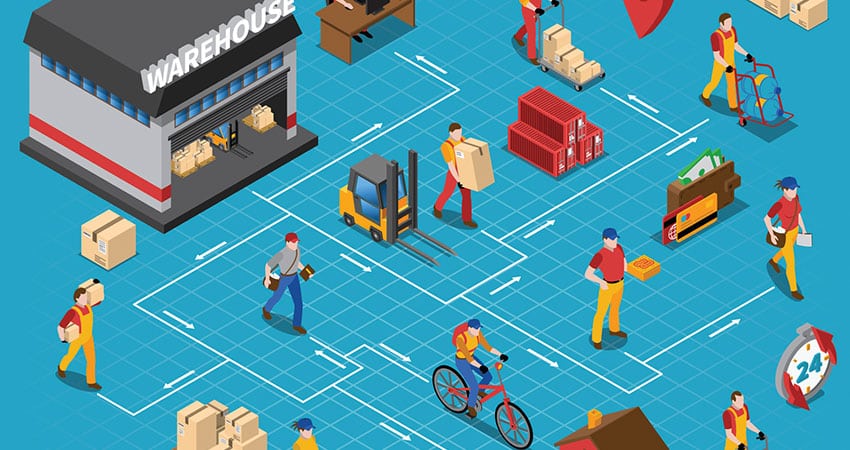There are hundreds of competent third-part fulfillment (3PL) providers. Many have multiple facilities which allows clients to be closer to the customer and save shipping costs.
The key is to select a 3PL which handles your type of business and merchandise that can give you a platform for growth and efficiency.
The 3PL option is not for everyone, but some of our clients have found it to be efficient, while delivering quality customer service. Here are 8 factors to consider as you evaluate whether the 3PL route makes sense for your organization.
Finding a Match
It’s important to identify each company’s core competencies how they match up to your requirements. Larger 3PLs may have locations dedicated to certain types of fulfillment. Here are non-cost factors to consider:
- Strengths in B2B or B2C fulfillment
- Major merchandise categories handled, such as apparel, hard goods, pharma or food
- System functionality to support your various sales channels
- Value-added services you require, such as kitting and assembly, personalization and continuity plans
- The size of typical client; will you be a small fish in a big pond?
- Years in service and financial stability
- Technology in place that will help your company remain cost competitive
- Fulfillment flexibility and scalability as your business grows
Describe your business requirements in the RFP and solicit a vendor short list best meeting these requirements.
Compare Operational Costs
The 3PLs will have questionnaires to help identify the transaction profile and services needed. Make sure your RFP provides enough details so they can provide an accurate one-year cost estimate for their services.
For your internal fulfillment, analyze your current costs for the same 12-month period to determine the fully loaded cost. This includes fulfillment management, direct and indirect labor, total occupancy, packing materials, outbound shipping and IT processing. This will give you the ability to compare returned RFPs on an apples-to-apples basis. It’s also a good idea to include projected growth rates for three years out.
When you look at the fully-loaded cost per order for internal fulfillment vs. 3PL, how do they compare? What savings are possible?
Inbound/Outbound Transportation
Inbound: Will the proximity of the 3PL’s facilities to key ports or transportation services save costs, reduce time in transit or provide other benefits?
Outbound: Based on the carrier freight charts for the facilities and cities you’re considering, determine how two-day and ground transit will improve your service levels vs. your current location and potentially cut down on the need to use costly overnight services.
Will using the 3PL’s carrier contracts save you money? Will the savings be shared by them?
Contracts
The length of most contracts is 3-5 years. Is the contracted fixed cost for the term, or is there an annual increase in costs?
One of the most commonly asked questions is, how can I build penalties into the agreement? This is very difficult to negotiate. More importantly, negotiate the service-level metrics which improve performance. Include dock-to-stock turnaround, percentage of orders taken and shipped same day, return processing times, and inventory shrinkage and who pays for it.
Avoiding Capital Expenses
What investments can be avoided? For one client, partnering with a 3PL meant avoiding the cost of replacing an aging order processing system. This saved them an estimated $1.5 million and several years of work, while freeing up capital for other projects.
Check Their References
Request references for your type of business, size and future growth projections. Check out some newer clients as well as longer-term ones. Work up a scripted list of questions for all candidates to create consistency.
Schedule Site Visits
Visit at least the top two finalists, especially the facilities being proposed to handle your business. Be sure to take several team members along to get a variety of observations and opinions.
Implementation Methodology
Your RFP should request implementation details, the task plan, time frames and responsibilities for all parties. Typical implementation timelines range from 120 days to six months or more.
Third-party fulfillment isn’t for everyone, but it is a strategic option that should be considered when looking to create an efficient platform that can handle your growth and improve your level of service.
Brian Barry is President of F. Curtis Barry & Company


Scheduling a site visit is so important. You want to get to know the people that you will be working with. A visit will also give you a better feel for the environment and morale.